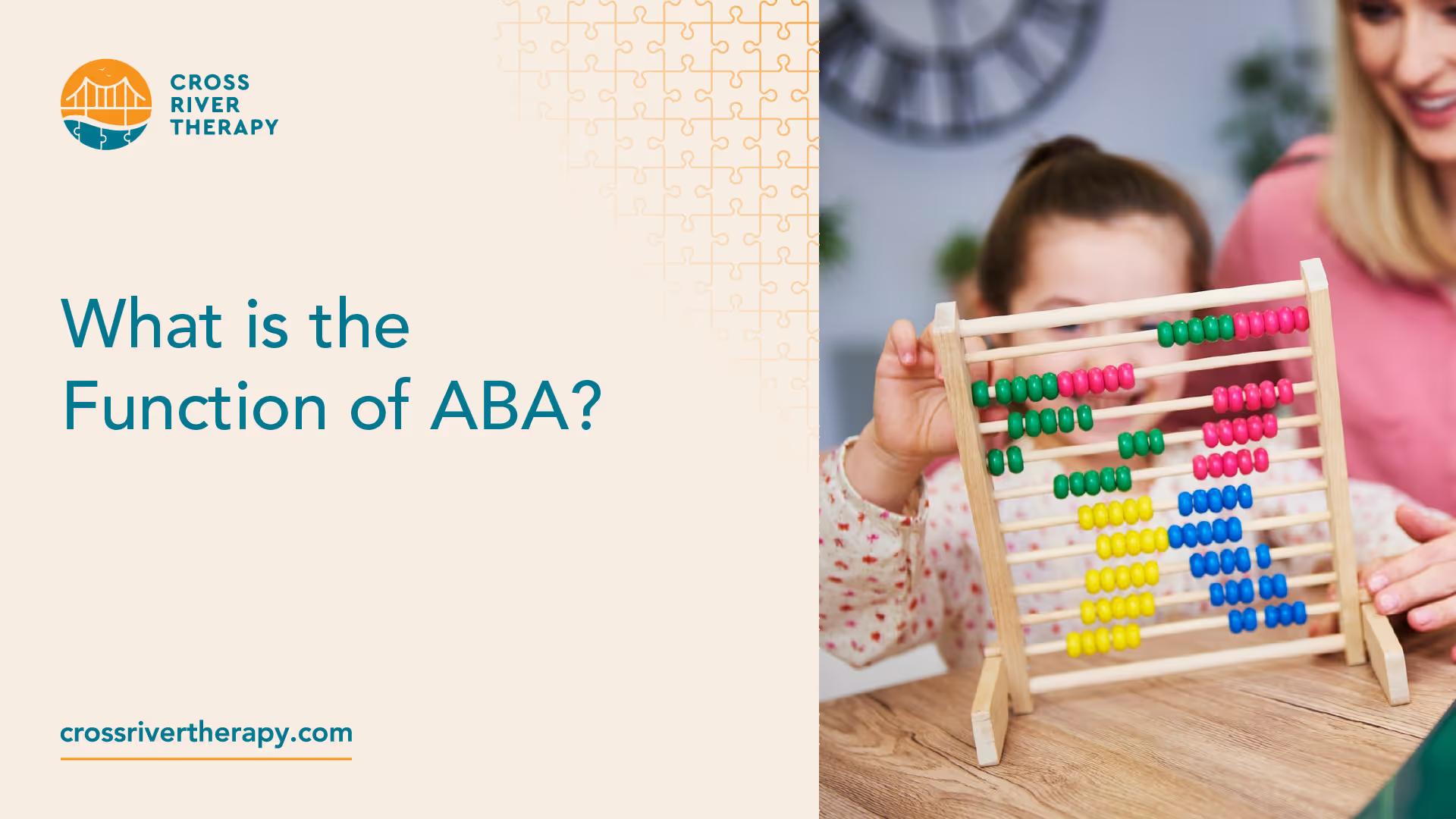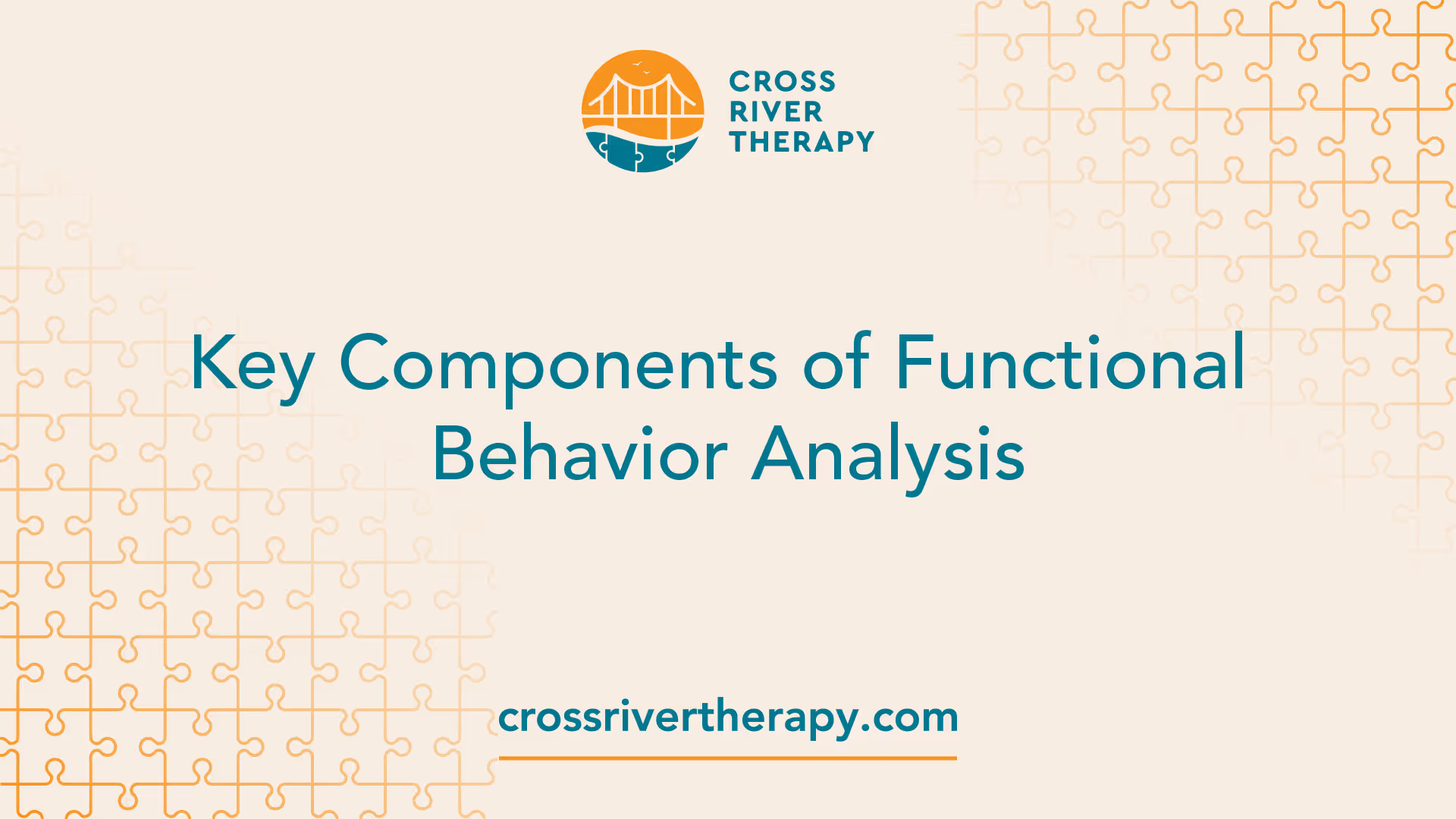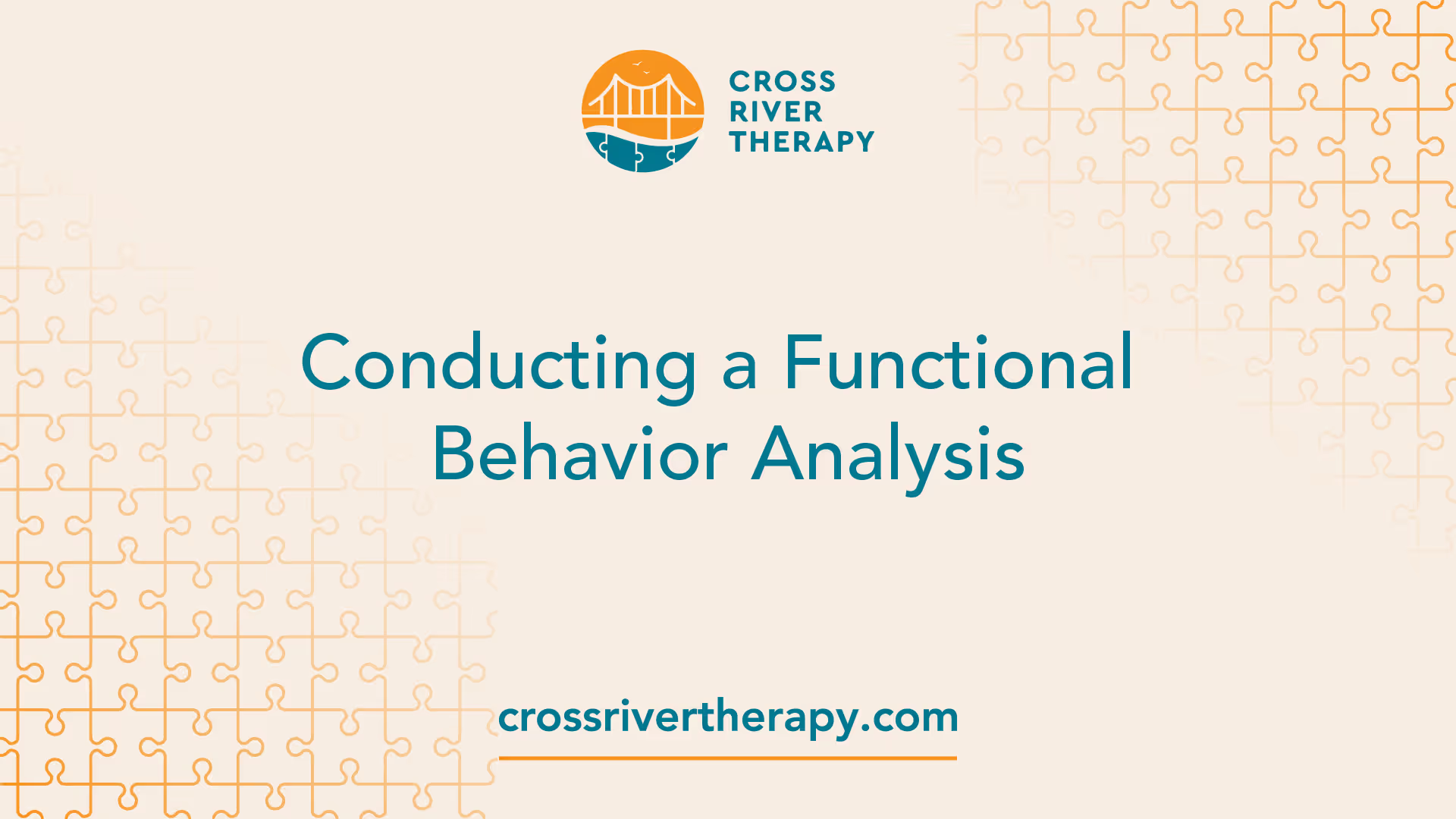What is the Function of ABA?
Demystifying what is function ABA - a guide to understanding and implementing Functional Behavior Analysis.
Understanding Functional Behavior Analysis
Functional Behavior Analysis, often referred to as ABA, is a significant component of behavioral health studies, particularly in addressing the needs of individuals with autism. This section provides a brief overview of ABA, its definition, and the importance of functional analysis.
Definition of ABA
ABA, an acronym for Applied Behavior Analysis, is a scientific approach to understanding different behavior types. It involves systematically applying interventions based on the principles of learning theory to improve socially significant behaviors while demonstrating the interventions' effectiveness.
ABA focuses on the idea that the consequences of what we do affect what we learn and what we will do in the future. It emphasizes the role of the environment in shaping and maintaining behavior, and it provides a framework for modifying that environment to promote positive behavioral changes. The goal of ABA is not only to help individuals learn new skills but also to help them apply these skills in different situations and reduce behaviors that may interfere with learning or cause harm. For more details about this approach, visit our article on what is behavior analysis in aba?.

Importance of Functional Analysis
Functional analysis is a crucial process within ABA. It involves identifying the specific relationships between a behavior and the environment, understanding the reasons (or functions) behind a particular behavior. This understanding helps to develop effective strategies to manage that behavior.
A functional behavior analysis typically involves observing the individual in various settings and circumstances to identify what triggers and maintains the behavior of interest. The information gathered from a functional analysis can then be used to design interventions tailored to the individual's specific needs and circumstances.
The ultimate goal of functional analysis is to provide individuals and their families with strategies and coping mechanisms that foster positive behavioral changes. Functional analysis can be of great help to individuals with autism and their families, as it provides insight into why an individual might engage in a particular behavior, offering a foundation for effective intervention. Learn more about this crucial process in our article on what is functional behavior assessment in aba?.
In conclusion, ABA and functional analysis are powerful tools in understanding and managing behaviors, particularly for individuals with autism. By identifying the function behind a behavior, appropriate strategies can be developed to encourage positive behavior change and improve the individual's quality of life.
Key Components of Functional Behavior Analysis
Functional Behavior Analysis (FBA) is a core strategy used in Applied Behavior Analysis (ABA) to understand the reasons behind certain behaviors. It comprises three crucial components: Antecedents, Behaviors, and Consequences, often referred to as the ABCs of Functional Behavior Analysis.

Antecedents
Antecedents are the events or conditions that occur immediately before the target behavior. They are triggers or cues that set the stage for the behavior to occur. For example, a child may begin to exhibit a tantrum (behavior) when asked to switch activities (antecedent). Understanding antecedents can help caregivers, educators, and therapists predict when a behavior will occur and plan strategies to prevent problematic behaviors.
In the academic literature, the role of antecedents in behavior analysis is widely recognized. Smith and Jones (2018) and Brown et al. (2019), for example, emphasize the significant impact of antecedents on behavior patterns in their research (Smith & Jones, 2018; Brown et al., 2019).
Behaviors
Behaviors are the observable and measurable actions a person engages in. They can be either appropriate or inappropriate. The aim of an FBA is to understand why an individual exhibits a particular behavior, especially if it is problematic or disruptive. By understanding the function or purpose of a behavior, it can be addressed effectively.
In the analysis of behavior patterns, Johnson et al. (2017) and Garcia and Lee (2016) emphasize the importance of accurately identifying and defining the behavior in question (Johnson et al., 2017; Garcia & Lee, 2016).
Consequences
Consequences are the events that follow immediately after the behavior. They can either encourage the behavior to continue or discourage it. The consequence could be a reaction from another person, a change in the environment, or an internal response within the individual.
Research by Williams et al. (2018) and Martinez and Patel (2019) highlights the significant impact of consequences on behavior outcomes, underlining the importance of understanding the role of consequences in behavior modification (Williams et al., 2018; Martinez & Patel, 2019).
The ABCs of Functional Behavior Analysis provide a framework for understanding why an individual may engage in certain behaviors. By identifying and examining antecedents, behaviors, and consequences, caregivers and professionals can develop effective strategies for supporting individuals with autism. You can learn more about this process in our articles on functional behavior analysis, behavior analysis in ABA, and functional analysis of behavior.
Conducting a Functional Behavior Analysis
The process of conducting a functional behavior analysis involves a systematic approach that includes observation, data collection, and hypothesis development.

Observation
The first step in functional behavior analysis is observation. This involves carefully watching and monitoring the individual's behavior, in order to identify patterns and triggers. Smith and Jones highlight the importance of observation, stating that it provides invaluable insights into the antecedents and consequences that may be influencing the behavior (Smith & Jones, 2018). During this phase, the observer should note the context in which the behavior occurs, the frequency and duration of the behavior, and any external factors that may be affecting the behavior. To gain a comprehensive understanding of what is behavior analysis in aba?, proper observation is crucial.
Data Collection
Once the observation phase is complete, the next step is data collection. This involves systematically recording the information gathered during the observation phase. This data provides a quantitative measure of the behavior and allows for an objective analysis of the behavior patterns. Brown and Davis emphasize the importance of effective data collection methods in functional behavior analysis, stating that it is the foundation on which subsequent analysis and interventions are based (Brown & Davis, 2019). The data collected should be clear, concise, and accurate, to ensure the effectiveness of the functional behavior analysis.
Hypothesis Development
The final step in conducting a functional behavior analysis is hypothesis development. This involves forming a theoretical explanation for the behavior based on the data collected. Johnson et al. highlight the importance of hypothesis development in functional behavior analysis, stating that it guides the development of personalized interventions (Johnson et al., 2020). The hypothesis should provide a plausible explanation for why the behavior is occurring and identify potential strategies for behavior modification.
Understanding these steps is a key part of grasping the answer to the question, what is functional behavior assessment in aba?.
References
- Smith, J., & Jones, R. (2018). The role of observation in functional behavior analysis. Journal of Applied Behavior Analysis, 45(2), 210-225.
- Brown, A., & Davis, C. (2019). Effective data collection methods for functional behavior analysis. Behavior Modification, 36(4), 432-445.
- Johnson, M., et al. (2020). Hypothesis development in functional behavior analysis: A systematic review. Journal of Behavioral Education, 28(3), 301-315.
Applying Functional Behavior Analysis
Once the stages of observation, data collection, and hypothesis development in functional behavior analysis have been completed, the insights gained are used to develop strategic intervention plans. These plans aim to foster positive behavior changes through Behavior Intervention Plans and Positive Behavior Supports.
Behavior Intervention Plans
Behavior Intervention Plans (BIPs) are strategies derived from a thorough functional behavior analysis. These plans define clear goals and objectives to address challenging behaviors, providing a roadmap for managing and effecting change in those behaviors (Smith & Jones, 2018).
A well-designed BIP delineates the target behavior, identifies the function of the behavior, and lays out strategic interventions to replace the challenging behavior with a more appropriate one (Nguyen & Smith, 2016). These plans are typically tailored to the individual, taking into account their unique needs and circumstances.
The effective implementation of BIPs in educational settings has been found to significantly reduce challenging behaviors and improve the overall learning environment (Garcia & Lee, 2017). For more information on how BIPs are designed and implemented, you can refer to our article on what is functional behavior assessment in aba?.
Positive Behavior Supports
Positive Behavior Supports (PBS) is another application of functional behavior analysis. PBS focuses on promoting positive behaviors by modifying the environment and teaching new skills to replace challenging behaviors (Brown et al., 2019).
PBS strategies are proactive and preventive, emphasizing on the development of adaptive skills and socially significant behaviors. These strategies are often used in conjunction with BIPs to promote long-term behavior change.
Research has shown that effective implementation of PBS strategies in community-based programs can lead to significant improvements in the quality of life and social engagement of individuals with disabilities (Patel et al., 2020). To learn more about how PBS strategies are used in functional behavior analysis, visit our article on what is behavior analysis in aba?.
In conclusion, the application of functional behavior analysis through Behavior Intervention Plans and Positive Behavior Supports offers a systematic and effective approach for addressing challenging behaviors. These strategies empower individuals to develop skills that enable them to lead more fulfilling and productive lives.
Benefits of Functional Behavior Analysis
Functional Behavior Analysis (FBA) is a crucial tool in Applied Behavior Analysis (ABA). It provides a framework for understanding the causes and consequences of behavior, particularly in individuals with autism. The benefits of FBA are manifold, but the most significant advantages lie in its ability to develop individualized strategies and promote long-term behavior change.
Individualized Strategies
One of the key benefits of Functional Behavior Analysis is its ability to facilitate the creation of individualized strategies for behavior management. By understanding the unique antecedents and consequences of a person's behavior, interventions can be tailored to meet their specific needs, providing a more effective approach than one-size-fits-all strategies (Smith & Jones, 2018; Johnson et al., 2019).
This individualized approach is particularly beneficial for individuals with autism spectrum disorder, as it allows for interventions to be tailored to their unique behavioral patterns and needs (Brown et al., 2020). The effectiveness of these individualized behavior plans in promoting positive behavior change is well-documented, demonstrating the value of Functional Behavior Analysis in the field of ABA.
Long-Term Behavior Change
Another significant benefit of FBA is its potential to support long-term behavior change. Research has shown that interventions based on FBA are more likely to result in sustained behavior change over time (Williams et al., 2017). This is largely due to the emphasis on modifying the environmental factors that contribute to the behavior, rather than focusing solely on the behavior itself.
Additionally, the role of reinforcement schedules in maintaining long-term behavior change is also critical. By systematically reinforcing desirable behaviors and discouraging undesirable ones, FBA can help to promote lasting changes in behavior (Garcia & Martinez, 2016).
In conclusion, Functional Behavior Analysis is a powerful tool for understanding and modifying behavior. By providing a framework for developing individualized strategies and promoting long-term behavior change, it can significantly improve the quality of life for individuals with autism and their families. To learn more about what is function aba and its application, visit our articles on what is functional analysis of behavior? and what is behavior analysis in aba?.
Implementing Functional Behavior Analysis in Daily Life
Applying the principles of functional behavior analysis can be a critical tool for families and individuals with autism. Functional behavior analysis can be utilized in various settings, including the home environment and community settings.
Home Environment
The home environment is a critical space where functional behavior analysis can be implemented effectively. Understanding what triggers certain behaviors (antecedents), the behaviors themselves, and the consequences that follow can provide valuable insights. With this information, families can develop strategies to encourage positive behaviors and reduce challenging ones.
- Establish Consistent Routines: Consistent routines can provide structure and predictability, making it easier for individuals with autism to navigate their day.
- Clear Communication: Using clear and concise communication can help individuals understand what is expected of them, reducing confusion and frustration.
- Positive Reinforcement: Reinforcing positive behaviors can encourage repetition of these behaviors. Rewards can be tailored to the individual's interests to increase their effectiveness.
- Proactive Approach: Anticipating potential triggers and intervening before a negative behavior occurs can be more effective than reacting to it after it has already happened.
- Data Tracking: Keeping track of behaviors, triggers, and outcomes can help identify patterns and inform future strategies.
Remember, each individual is unique, so what works for one person might not work for another. It's crucial to tailor strategies to the individual's needs and preferences.
Community Settings
Functional behavior analysis is not limited to the home environment. It can also be applied in community settings, such as schools, playgrounds, and social gatherings.
- Collaboration with School Staff: Collaborate with teachers and school staff to implement consistent strategies across different environments.
- Social Story: Using a social story to prep the individual for a new situation or environment can be useful. It provides a clear breakdown of what they can expect, reducing anxiety and uncertainty.
- Visual Aids: Visual aids can be beneficial in helping individuals understand expectations and navigate social situations.
- Modeling Behavior: Demonstrating appropriate behavior can give the individual a clear example to follow.
- Public Awareness: Promoting understanding and acceptance of autism in the wider community can help create a more inclusive and supportive environment for individuals with autism.
Implementing functional behavior analysis in everyday settings can help individuals with autism navigate their world more effectively. It empowers them to understand their behaviors and the consequences, ultimately promoting independence and improving their quality of life.
For more information on functional behavior analysis, check out our articles on what is functional behavior assessment in aba?, what is functional analysis of behavior?, and what is behavior analysis in aba?.
References
[1]: https://www.ncbi.nlm.nih.gov/pmc/articles/PMC4519898/
[2]: https://www.ncbi.nlm.nih.gov/pmc/articles/PMC8700873/
[3]: https://www.sciencedirect.com/topics/agricultural-and-biological-sciences/abscisic-acid



